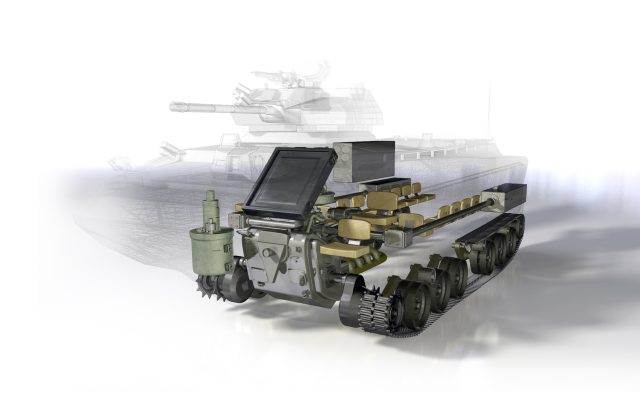
For those of you who have tinkered in your spare time while dreaming of a big score, consider the tale of Eric Nees, his father James Nees, and his longtime friend Brian Eckerly. Working when off-the-clock and collaborating over the Internet, the three designed and tested a product that won them a $1 million prize from the Defense Advanced Research Projects Agency (DARPA).
But it wasn't exactly a piece of software that they designed. The three, known collectively as Team Ground Systems, created the drive train and control systems for an amphibious armored vehicle. Their design was built using experimental design tools based on "correct-by-construction" engineering principles and Web-based collaborative tools modeled on community software development tools like SourceForge. Their ultimate creation earned the highest scores for meeting design thresholds and the practicality of manufacturing in the first round of DARPA's Fast Adaptible Next-Generation Ground Vehicle (FANG) Challenge.
The challenge is part of a larger effort by DARPA to break the cycle of pain and expense that seemingly every defense system contract is governed by. The contest marries crowdsourcing and collaborative development with advanced computer-driven manufacturing to speed up the process between concept and first build. The design, largely constructed from a library of components curated by DARPA's VehicleForge team with known characteristics, will now be manufactured in an experimental fabrication facility called iFAB (Instant Foundry Adaptive through Bits). That facility is being built by the Applied Research Laboratory at Penn State University.
"It doesn't take a lot of searching to see how this sort of crowdsourcing of design and integrated development environments have changed a lot of industries," Eric Nees said in an interview with Ars. "It's the first time they've been implemented in this sort of way, but I think it's pretty clear that there's a lot of value in it."
While the design pulled together by Team Ground Systems relied almost entirely on the components in the library, there was a significant amount of design work in properly integrating the systems, according to Eric Nees. His father agreed. "We did select a lot of components from the repository, but so many times we had to go research individual components on the DARPA site to make sure that they were at least close to being compatible," James Nees said. "It's nice to say you can just take all the LEGO blocks and stitch them together, but some components are different. They just don't work with the rest of the system."
Team Ground Systems wouldn't have been possible without the VehicleForge and Advanced Vehicle Make tools used for the challenge, developed by a team at Vanderbilt University. The three team members are scattered across the country. Eric Nees is a 2008 graduate of Rose-Hulman Institute of Technology in Indiana, and he works for a defense contractor in California (where he has done work on other ground vehicles). His father James spent 23 years in the Air Force as a research engineer and now does project management work at the Air Force Research Laboratory while living in Ohio. And Eckerly went to high school with Eric and holds a bachelor's degree in electrical and computer engineering from Ohio State (he currently lives in Texas).
"I worked for two big banks," Eckerly said. "About a year ago, I quit to pursue other interests—this competition being one of them."
As the only one with any direct experience with automotive systems, Eric acted as subject matter expert and project lead. "There's jargon that wasn't necessarily accessible to people not familiar with automotive systems in this project," he said. Those excluded would include his father James, who said, "I had a little bit of time when I designed anti-armor warheads—so trying to blow up vehicles but not trying to build one."
Eckerly's contribution to the team was largely focused on crunching simulation numbers. His work in the banking industry "was mostly data analysis and work on big data type projects," he said. "Banks are always looking for ways to collect more data, process it, and make themselves more profitable. So that was sort of my niche on this team—we had to run a lot of simulations and collect data from them. I was good at trying a lot of different combinations, collecting the data, and then providing the results back to my teammates on what was working well and what wasn't."
Using the VehicleForge repository for the project cut down on the problems of sharing large data files, James Nees said. His son added that it helped the team distribute the work effectively as the project progressed. "Throughout the course of the competition, there were times when one of us was occupied, on vacation, or something like that, so the work for each of us sort of went up and down," Eric Nees said.
Team Ground Systems wasn't the smallest team in the DARPA competition—DARPA representatives said one of the other top designs was submitted by a one-person team. Another team among the top finishers consisted of participants who met for the first time virtually through the VehicleForge community tools. But Eric Nees said he thought his team was just the right size for the task at hand. "In the end, when we were dedicating a lot of time to it, we were breaking the task down into smaller problems and assigning specific tasks to each of us. That really helped us get a lot done; one person could focus on a task and finish it. So I think in that sense it helped to have three people instead of just one—but having more than that could have become even more work."
When asked how the money was being divided now that the work was done, Eric Nees laughed. "A simple three-way split."
reader comments
21